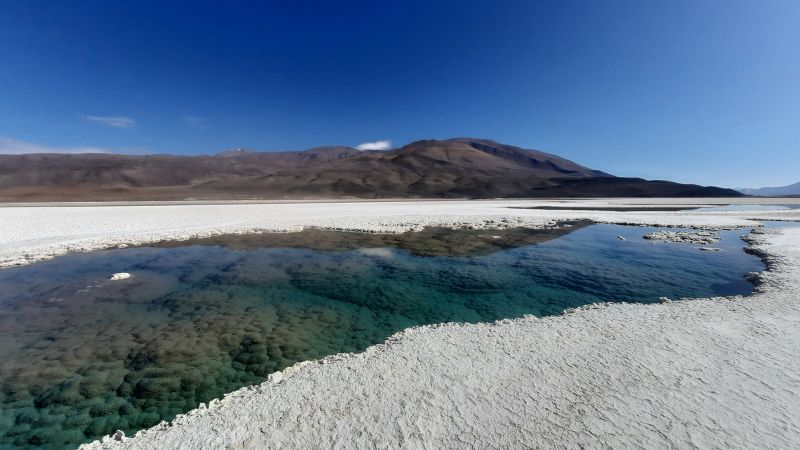
Land of the lost: Hidden lagoon network found with living fossils similar to those from more than 3 billion years ago
CNN
A newly discovered system of lagoons in Argentina featuring giant stromatolites could provide a window into early life on Earth, researchers said.
Scientists have discovered a previously hidden ecosystem with an expansive system of lagoons in the salt plains of Puna de Atacama, an arid plateau in Argentina — with giant stromatolites that could provide a glimpse into the earliest life on Earth and possibly even on Mars, according to new research. Stromatolites are layered rocks created by the growth of blue-green algae, or cyanobacteria, through photosynthesis. The structures are considered to be one of the oldest ecosystems on Earth, according to NASA, representing the earliest fossil evidence for life on our planet from at least 3½ billion years ago. “These are certainly akin to some of the earliest macrofossils on our planet, and in really a rare type of environment on modern Earth,” said Brian Hynek, a professor in the department of geological sciences at the University of Colorado Boulder, who helped document the ecosystem. “They are a window into the distant past as to what life might have looked like 3½ billion years ago on our planet.” Ancient giant stromatolites used to be widespread in Earth’s Precambrian era, which encompasses the early time span of around 4.6 billion to 541 million years ago, but now they are sparsely distributed around the world. The most well-developed areas are in the Bahamas and the Shark Bay area in Western Australia, according to the nonprofit conservation organization Bush Heritage Australia. Modern stromatolites are relatively small, Hynek said, whereas ancient stromatolites used to grow to 20 feet (6 meters) tall and 16 to 22 feet (5 to 7 meters) wide, he said. Beneath the waters of Puna de Atacama’s lagoons, the recently uncovered stromatolites are up to 15 feet (4.5 meters) wide and several feet high, according to a news release from the University of Colorado Boulder. Stromatolites also tend to grow in alkaline conditions, but the Puna de Atacama’s system of lagoons are acidic. The stromatolites found today are almost all carbonate rocks (made of limestone), but these structures are mostly composed of the minerals gypsum and halite (rock salt), Hynek said.

Federal Reserve Chair Jerome Powell has told multiple associates and allies that there’s no chance he will bow to President Donald Trump’s calls for him to resign, vowing to withstand several more months of the president’s unprecedented, multi-pronged assault over Powell’s refusal to lower interest rates.

Former President Joe Biden’s chief of staff, Ron Klain, told staffers on the House Oversight Committee that former National Security Adviser Jake Sullivan and former Secretary of State Hillary Clinton raised concerns to him in 2023 and 2024 about Biden’s political chances, two sources familiar with the matter said.





















 Run 3 Space | Play Space Running Game
Run 3 Space | Play Space Running Game Traffic Jam 3D | Online Racing Game
Traffic Jam 3D | Online Racing Game Duck Hunt | Play Old Classic Game
Duck Hunt | Play Old Classic Game









